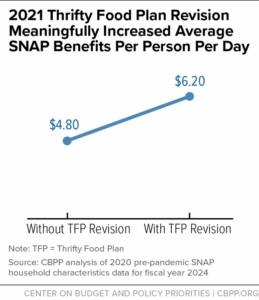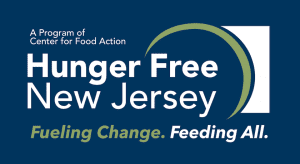Afterschool suppers are on the menu in a growing number of New Jersey communities, giving more children the afternoon nutrition they need to stay healthy and succeed in school, according to a new report by Hunger Free New Jersey.
From 2016 to 2019, the number of children served dinners rose 34 percent, translating to nearly 24,000 children receiving this meal each day in afterschool programs operated by schools, community organizations and local governments, according to Food for Thought: The State of Afterschool Meals in New Jersey, 2019.
In March 2019, communities served nearly 485,000 suppers to children who might otherwise go home to an empty dinner table. These communities collected $1.8 million for snacks and suppers served in March alone.
Despite this progress, New Jersey still falls short of reaching 15 percent of low-income children who eat free or reduced-price school lunch – a national standard set by the Food Research & Action Center.
If New Jersey achieved that goal, communities could collect an additional $19.9 million in federal dollars to feed children, the report found.
“This is incredible progress and means that many more children are receiving this important afternoon and evening nutrition, helping to combat childhood hunger,’’ said Adele LaTourette, director, Hunger Free New Jersey. “But we have a lot more work to do. We are still reaching just 6 percent of children who could benefit from suppers.’’
Afterschool meals can be provided to children up to age 18 at afterschool programs based in schools, community and faith-based sites. Funding is provided through two federal programs: The Child and Adult Care Food Program and the National School Lunch Program. While schools have for years served snacks through the school lunch program, suppers are a relatively new addition through CACFP.
Unlike the school lunch program, CACFP allows communities to serve both snacks
and suppers. Meals can also be served on weekends and during school breaks. This
gives communities more opportunities to fill the meal gaps children often face
when they lack access to school meals, LaTourette said.
“We’re really encouraging more school districts to switch to CACFP,’’ LaTourette said. “They can feed dinner to students during the week and during breaks, while collecting higher federal reimbursements.’’
“We know that many New Jersey families struggle to put food on the table,’’ said Cecilia Zalkind, president & CEO, Advocates for Children of New Jersey. “We know that poor nutrition leads to poor outcomes for kids, so it is crucial that communities work together to tap into this and other federal child nutrition programs.’’
Reinvestment Fund, with support from the Robert Wood Johnson Foundation, has established a new fund to help communities participate in the Child and Adult Care Food Program.
The New Jersey Child Nutrition Fund provides capital funding and technical assistance for federal nutrition program sponsors, sites and meal vendors to expand the availability of fresh and nutritious food to children across New Jersey.
“We are accepting applications from communities across New Jersey and look forward to working in partnership to ensure that more children get the healthy, nutritious food they need to thrive,’’ said Donna Leuchten Nuccio, senior director of healthy food access, Reinvestment Fund, which contributed to the Hunger Free New Jersey report.
In addition to providing good nutrition, afterschool programs also bolster academic achievement, provide safe places for children to play and learn after school and support working parents.
“Far too many children come home from school to an empty table and may not get anything to eat until they go to school the next morning,’’ LaTourette said. “There is absolutely no reason for this when federal dollars are waiting to be claimed to feed these children.’’






